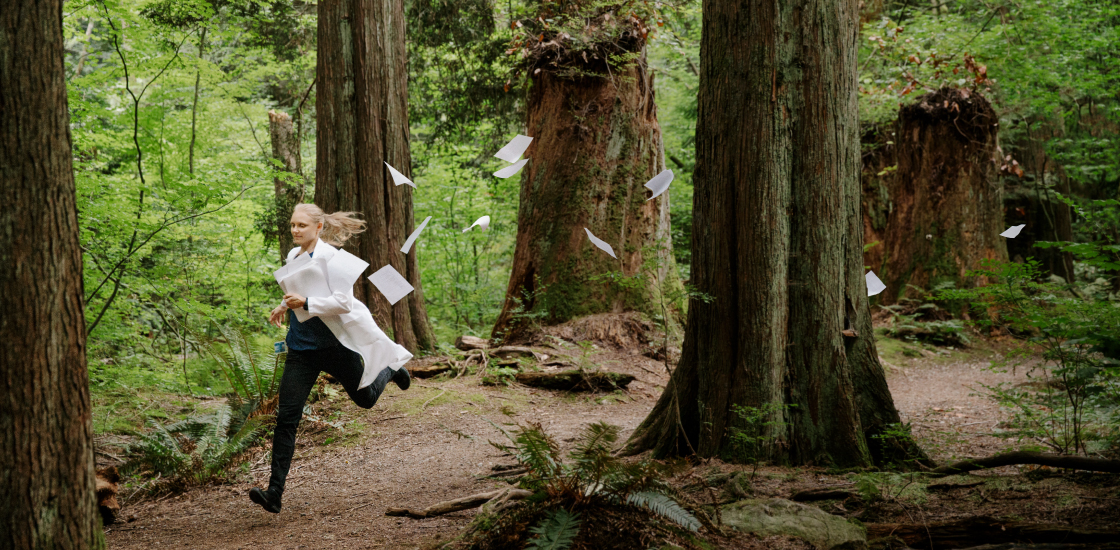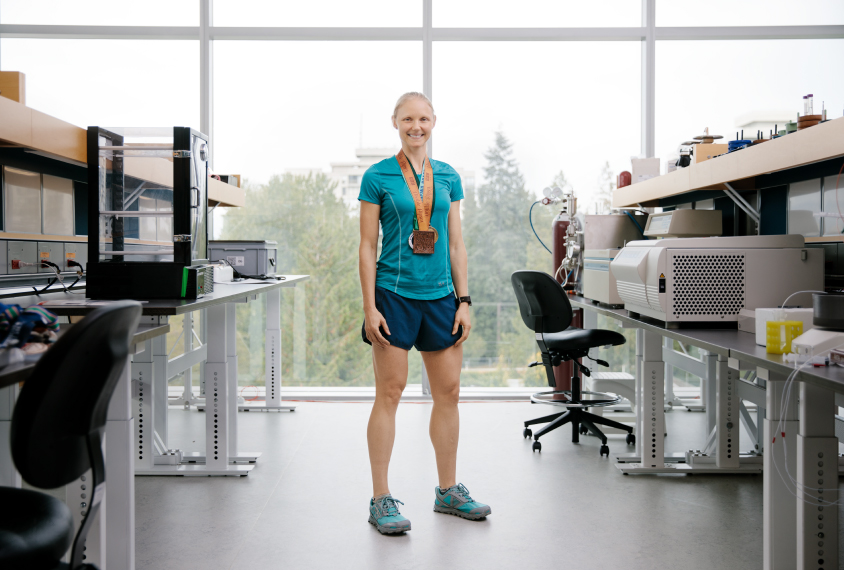Beyond the bench: A conversation with Annie Ciernia
Annie Ciernia describes the greenhouse origins of her scientific career and why a unicorn makes a good lab mascot.

Three months ago, Annie Ciernia moved to Canada after more than a decade in California. Already, she likes her new home. Her daily ritual includes a morning run that takes her through a leafy forest — and she can (almost) see the ocean from her house.
Ciernia is a newly minted assistant professor of biochemistry and molecular biology at the University of British Columbia in Vancouver, where she studies how genes are switched on and off in mouse models of autism.
She misses only two things about living in the United States, she says: the grocery store Trader Joe’s and the U.S. version of Amazon.
Ciernia spoke with Spectrum about the greenhouse origins of her scientific career and why a unicorn makes a good lab mascot.
Spectrum: What ‘big question’ drives your research?
Annie Ciernia: I want to understand how genes and the environment together shape our developing brains. My lab combines experimental and computational approaches to try to understand the role of chemical tags on DNA that control the expression of genes. These ‘epigenetic’ modifications give cells the ability to adapt to changes in their environment throughout life. They are also likely to be disrupted in conditions such as autism.
Our long-term goal is to then use our understanding of gene expression in the brain to find new therapeutic targets for autism.
S: Whose work do you admire?
AC: I love Beth Stevens’ work on microglia (the brain’s immune cells), and she is a wonderful scientist and person. She is super supportive of young scientists, especially young women like me. She gave me some terrific advice about starting my own lab and mentoring students.
I also admire Jonathan Kipnis’ work. He has an out-of-the-box approach to problems and has developed some amazing imaging techniques over the past several years that show how peripheral immune cells interact with the brain.
S: When did you become interested in science?
AC: My dad was a research technician in plant sciences at North Dakota State University in Fargo. I remember going with him as a kid to the greenhouse and helping him water the plants in his experiments. That was my introduction to the concept of an experiment. It was eye-opening to realize I could discover how things worked by changing variables in the environment, such as light and water. I was immediately hooked.
S: What does your day look like?
AC: I typically wake up at 6 a.m. and go for a run on the trail near my house. It goes through a lovely forest filled with ferns and greenery and is by far the most relaxing part of my day — no email, no phone, no obligations.
After breakfast, I head into the lab at 8:30 and spend the first hour or so with a cup of coffee, answering emails. Then I usually check in with members of my lab about their experiments or plans for the day, or head off to meetings or back to my office to work on a grant. I regularly have lunch with members of my lab or other colleagues on campus to socialize and catch up on events going on around Vancouver. Then it is time for another cup of coffee and squeezing in a few hours of writing before heading home around 6 or 7 p.m.

S: Tell us your favorite story from a research conference.
AC: One year at the Society for Neuroscience conference in New Orleans, Louisiana, I went bar-hopping with the other students from my graduate school lab. We ended up at this amazing hole in the wall with a live band. It was the first time I had ever seen a musician hit spoons against a metal wash basin — and it was amazing. About every third strike, the collision created both a tone and a spark. The entire place was full of neuroscientists, so I guess we weren’t the only ones transfixed by the experience.
S: Has your move to Canada brought any surprises?
AC: I definitely miss Trader Joe’s. I particularly miss their barbecue sauce and garlic aioli mustard. And Amazon is just not the same Canada — it is slower and has fewer options. Otherwise, I have fallen in love with Vancouver; who doesn’t love maple-syrup-flavored everything?
There are a couple of interesting, quirky things that Canadians do. They apologize more often than Americans do, and everyone is overly friendly — which is sweet and reminds me of where I grew up in Minnesota.
S: What are you reading right now?
AC: I love all kinds of fiction, but after a long day, I usually go for something light, with an easy-to-follow story line that I can enjoy before falling asleep. Right now, I am rereading an old favorite of mine, “Green Rider” by Kristen Britain.
S: How much sleep do you get?
AC: I value my sleep. I often function on about six to seven hours, but I feel at my best with closer to eight. My brain shuts down after about 10 p.m., so I might as well be sleeping.
S: Does your lab have a mascot or any traditions?
AC: Not yet, but I’m thinking of introducing a unicorn as our mascot. Who doesn’t like magic and a bit of good luck to go with their science?
Recommended reading

New organoid atlas unveils four neurodevelopmental signatures
Explore more from The Transmitter
Snoozing dragons stir up ancient evidence of sleep’s dual nature

The Transmitter’s most-read neuroscience book excerpts of 2025


